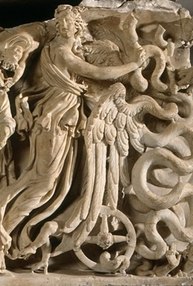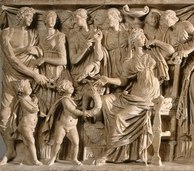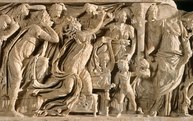The history of LIMC



The Lexicon Iconographicum Mythologiae Classicae (LIMC).
As early as 1969/1970, Prof. Lilly Kahil† (Paris/Fribourg) took steps to create a lexicon in which the imagery of ancient mythology would be presented in its entirety for the first time. At her instigation, the Centre National de la Recherche Scientifique organized a table ronde in December 1971, bringing together a number of researchers from various countries who were particularly interested in iconographic problems. Outstanding personalities supported the project from the beginning. Already in 1972 the way was prepared and the collaboration of several academies, research centers and research funds, including the Swiss National Fund for the Promotion of Scientific Research, was assured. On November 24, 1972, the Foundation for the LIMC - based in Basel since 1983 - was established in Geneva.
Documentation centers, where the information is collected, were created in numerous countries. The central editorial office was established in Basel in 1973. Affiliated editorial offices were located in Athens, Paris, Heidelberg and Würzburg. A total of 32 countries were involved in the scientific work.
Recognitions have been correspondingly international: for example, the designation of the Foundation for LIMC as a UNESCO "Non-Governmental Organization (NGO)" in 1989 and the awarding of prizes by the Académie des Inscriptions et Belles-Lettres of the Institut de France in Paris (1985 and 1988) and the Fondation Prince Louis de Polignac (1998).
The Foundation for the LIMC was officially dissolved on March 31, 2014. Its archives and databases were transferred to the University of Basel.
The imagery of ancient myth, one of the most important hallmarks of Greco-Roman culture and one of its most significant legacies to posterity, is still alive today in countless examples. LIMC aims to make our present knowledge of the iconography of Greek, Etruscan and Roman mythology, as well as that of peripheral Mediterranean cultures, accessible in a practical form to all those interested in the ancient world, an inexhaustible source of inspiration also for artists, poets, theater and film makers.
The LIMC treats, in alphabetical order, all figuratively transmitted figures of Greek, Etruscan and Roman mythology, mostly in a separate article, always structured in the same way.
One of the richness of the LIMC is that in one and the same work are united the different regional expressions of the same classical culture, whose testimonies reach from India to the Iberian Peninsula and around the Mediterranean basin.
The ThesCRA - a comprehensive work on cults and rites - aims to document the evidence of classical antiquity in the field of religious rituals and to make it accessible for research and a wide audience. Until its publication, there was no reference work of this kind that systematically treated the cults and rites of classical antiquity. The ThesCRA covers in equal measure the pictorial representations of the cults and rites, the associated realia and the texts relating to them. It treats images, monuments, and texts equally, does not ignore open problems, but reflects the current state of research. Specialists from various fields have contributed to the ThesCRA.
The ThesCRA is not structured in lexicon form with lemmas, but rather by subject areas in chapters delimited by content. The basic structure is as follows:
dynamic elements, actions: the ritual actions such as procession, sacrifice, banquet, purification, prayer, mantics, etc.
static elements: the places of worship with their facilities, the cult personnel with cult equipment and jewelry.
Occasions and occasions of cult acts and rites.
